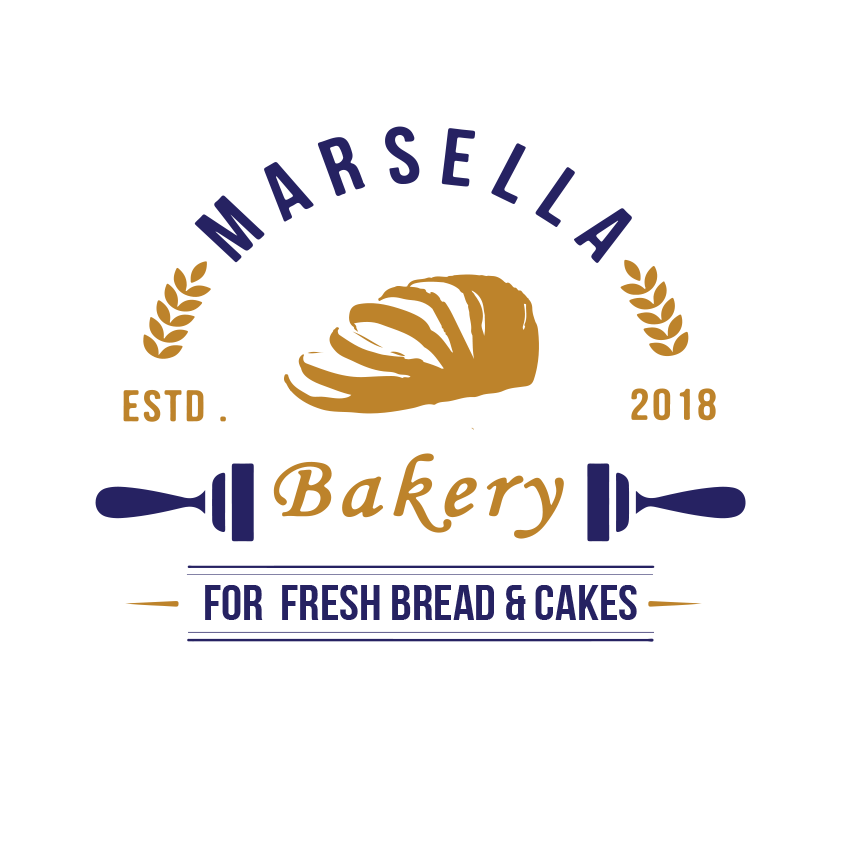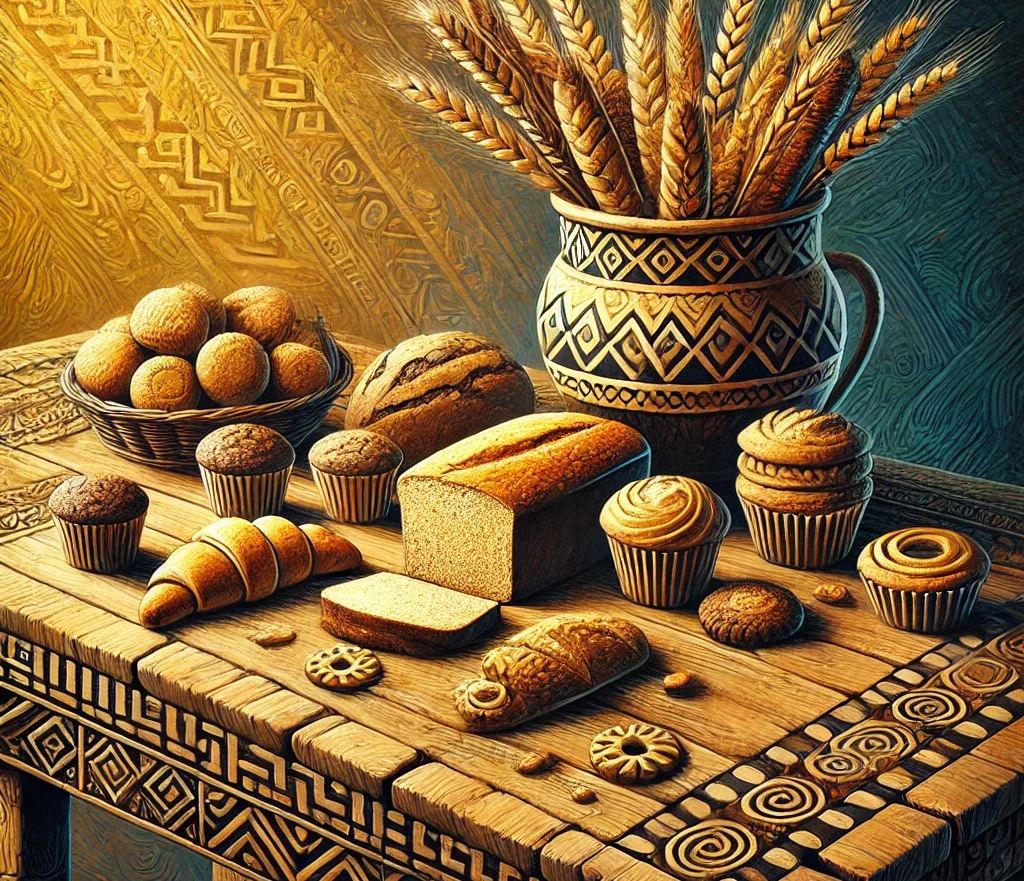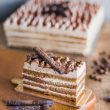I. Introduction to Healthy Baking
Healthy baking has gained significant popularity in recent years, offering a nutritious alternative to traditional baked goods. This approach to baking provides numerous benefits, including improved nutrient content, reduced calorie intake, and enhanced overall health. However, misconceptions about healthy baked goods persist, with many individuals believing that these alternatives lack flavor or texture. Contrary to this belief, whole wheat and gluten-free options have emerged as viable and delicious choices for health-conscious consumers.
A. Benefits of healthy baking
Healthy baking offers a multitude of advantages for both physical well-being and culinary enjoyment. By incorporating nutrient-dense ingredients, individuals can increase their intake of essential vitamins, minerals, and fiber. Furthermore, healthy baking often results in reduced sugar and unhealthy fat content, contributing to better weight management and improved cardiovascular health.
B. Common misconceptions about healthy baked goods
One prevalent misconception is that healthy baked goods are inherently less flavorful or less satisfying than their traditional counterparts. This notion is largely unfounded, as advancements in baking techniques and ingredient selection have led to the creation of delectable healthy alternatives. Another common misunderstanding is that healthy baking is overly complicated or time-consuming. In reality, many healthy baking recipes are straightforward and can be easily incorporated into one’s culinary repertoire.
C. The rise of whole wheat and gluten-free options
The increasing demand for healthier food choices has propelled the popularity of whole wheat and gluten-free baking. Whole wheat flour, rich in nutrients and fiber, has become a staple in health-conscious kitchens. Simultaneously, the growing awareness of gluten sensitivities and celiac disease has led to a surge in gluten-free baking options. These alternatives cater to individuals with specific dietary needs while offering nutritional benefits to the general population.
II. Understanding Whole Wheat Baking
A. Nutritional advantages of whole wheat flour
Whole wheat flour is a nutritional powerhouse compared to refined flour. It retains the bran, germ, and endosperm of the wheat kernel, providing a higher content of fiber, vitamins, and minerals. The increased fiber content aids in digestion, promotes satiety, and helps regulate blood sugar levels. Additionally, whole wheat flour contains essential nutrients such as vitamin E, B vitamins, and minerals like iron and zinc.
B. Differences between whole wheat and refined flour
The primary distinction between whole wheat and refined flour lies in their processing methods. Whole wheat flour is made by grinding the entire wheat kernel, preserving all its nutritional components. In contrast, refined flour undergoes a process that removes the bran and germ, stripping away much of its nutritional value. This refinement results in a softer texture and longer shelf life but at the cost of reduced nutrient content.
C. Tips for incorporating whole wheat flour in recipes
Integrating whole wheat flour into baking recipes requires some adjustments to achieve optimal results. One effective approach is to gradually replace a portion of refined flour with whole wheat flour, allowing for a smoother transition in taste and texture. It is advisable to increase the liquid content slightly, as whole wheat flour tends to absorb more moisture. Additionally, allowing the batter or dough to rest for a period before baking can enhance the final product’s texture and flavor.
III. Exploring Gluten-Free Baking
A. What is gluten and why avoid it?
Gluten is a protein found in wheat, barley, and rye that provides elasticity and structure to baked goods. While gluten is harmless for most individuals, some people have celiac disease or gluten sensitivity, necessitating its avoidance. Gluten-free baking caters to these dietary restrictions while offering potential benefits for overall digestive health.
B. Popular gluten-free flours and their properties
A variety of gluten-free flours are available, each with unique properties and nutritional profiles. Rice flour, almond flour, and coconut flour are popular alternatives, offering distinct flavors and textures. Tapioca flour and potato starch are often used as binding agents in gluten-free baking. Understanding the characteristics of these flours is crucial for successful gluten-free baking.
C. Challenges and solutions in gluten-free baking
Gluten-free baking presents several challenges, primarily related to achieving the desired texture and structure in baked goods. The absence of gluten can result in crumbly or dense products. To overcome these issues, bakers often employ techniques such as using xanthan gum or psyllium husk as binding agents. Combining different gluten-free flours can also help achieve a more balanced texture and flavor profile.
IV. Essential Ingredients for Healthy Baking
A. Natural sweeteners and sugar alternatives
Reducing refined sugar intake is a key aspect of healthy baking. Natural sweeteners like honey, maple syrup, and dates offer sweetness with additional nutritional benefits. Stevia and monk fruit extract are calorie-free alternatives that can be used in moderation. When substituting natural sweeteners for sugar, it is important to adjust liquid ratios in recipes accordingly.
B. Healthy fats and oil substitutes
Incorporating healthy fats into baking can enhance both nutritional value and flavor. Avocado, Greek yogurt, and applesauce serve as excellent substitutes for butter or oil in many recipes. Coconut oil and olive oil are healthier alternatives to vegetable oils, providing beneficial fatty acids. These substitutions often require adjustments in measurements and mixing techniques to achieve the desired consistency.
C. Egg replacements for vegan baking
For those following a vegan diet or seeking to reduce egg consumption, several egg replacements are available. Ground flaxseed mixed with water creates a gelatinous consistency similar to eggs. Mashed bananas, applesauce, and commercial egg replacers are also effective alternatives. Each substitute may affect the texture and flavor of the final product differently, necessitating experimentation to achieve optimal results.
V. Healthy Baking Techniques and Tips
A. Adjusting recipes for healthier outcomes
Modifying traditional recipes to create healthier versions involves strategic ingredient substitutions and proportion adjustments. Reducing sugar content, replacing refined flours with whole grain alternatives, and incorporating nutrient-dense ingredients are common approaches. It is advisable to make incremental changes and test recipes multiple times to achieve the desired balance of health and taste.
B. Proper measuring and mixing methods
Accurate measurement of ingredients is crucial in healthy baking, as alternative flours and sweeteners can significantly impact the final product. Using kitchen scales for precise measurements is recommended. When mixing ingredients, it is important to follow the specified method in the recipe, as overmixing can lead to tough or dense baked goods, particularly when using whole grain flours.
C. Temperature control and baking times
Proper temperature control is essential in healthy baking, as alternative ingredients may react differently to heat. Preheating the oven and using an oven thermometer ensure accurate temperatures. Baking times may need adjustment when using whole grain flours or alternative sweeteners. Regular checking and testing for doneness are advisable to prevent over or underbaking.
VI. Delicious Whole Wheat Recipes
A. Whole wheat bread and rolls
Whole wheat bread offers a hearty, nutritious alternative to refined white bread. A basic recipe includes whole wheat flour, yeast, salt, and water. The addition of honey or molasses can enhance flavor and promote fermentation. For softer rolls, incorporating a small amount of vital wheat gluten can improve texture. Allowing the dough to rise slowly in the refrigerator overnight can develop a more complex flavor profile.
B. Cookies and bars using whole wheat flour
Whole wheat flour can be successfully incorporated into cookie and bar recipes, adding depth of flavor and nutritional value. Oatmeal raisin cookies made with whole wheat flour offer a satisfying texture and natural sweetness. Whole wheat brownies, enhanced with dark chocolate and walnuts, provide a rich, indulgent treat with added fiber and nutrients.
C. Cakes and muffins with a wholesome twist
Whole wheat flour can be used to create delicious, moist cakes and muffins. A whole wheat carrot cake, sweetened with applesauce and maple syrup, offers a healthier take on the classic dessert. Banana whole wheat muffins, incorporating Greek yogurt for added protein and moisture, make for a nutritious breakfast or snack option.
VII. Mouthwatering Gluten-Free Creations
A. Gluten-free bread alternatives
Gluten-free bread baking has evolved significantly, offering tasty alternatives for those avoiding gluten. A blend of rice flour, almond flour, and tapioca starch can create a versatile bread base. Adding psyllium husk provides structure and helps retain moisture. Gluten-free sourdough, made with a rice flour starter, offers a tangy flavor profile similar to traditional sourdough.
B. Cookies and pastries without gluten
Gluten-free cookies and pastries can be just as delectable as their wheat-based counterparts. Almond flour chocolate chip cookies provide a rich, nutty flavor and tender texture. Gluten-free pie crust, made with a combination of rice flour and almond flour, can be used for both sweet and savory applications. The addition of xanthan gum helps achieve the desired flakiness in pastries.
C. Cakes and cupcakes for gluten-sensitive individuals
Creating light and fluffy gluten-free cakes requires careful selection of flour blends and leavening agents. A combination of rice flour, potato starch, and almond flour can yield excellent results in cake recipes. Gluten-free vanilla cupcakes, made with a touch of almond extract for enhanced flavor, can be enjoyed by all. The use of apple cider vinegar in conjunction with baking soda helps achieve a tender crumb in gluten-free cakes.
VIII. Conclusion: Embracing Healthy Baking
A. Recap of key points
Healthy baking, encompassing whole wheat and gluten-free options, offers numerous benefits without compromising on taste or enjoyment. The use of nutrient-dense ingredients, natural sweeteners, and alternative flours provides a pathway to more nutritious baked goods. Overcoming challenges in texture and flavor through proper techniques and ingredient selection is key to successful healthy baking.
B. Encouragement for experimenting with healthy baking
Individuals are encouraged to explore the world of healthy baking, experimenting with different ingredients and techniques. The journey of transforming traditional recipes into healthier versions can be both rewarding and delicious. Patience and persistence are essential, as achieving the perfect balance may require multiple attempts.
C. The future of nutritious and delicious baked goods
The field of healthy baking continues to evolve, with ongoing research and development of new ingredients and techniques. As consumer demand for healthier options grows, it is likely that we will see further innovations in whole wheat and gluten-free baking. This progression promises a future where nutritious baked goods are not only accessible but also increasingly delicious and diverse.
IX. Frequently Asked Questions
A. How does healthy baking affect taste and texture?
Healthy baking can alter the taste and texture of baked goods, often resulting in denser products with more complex flavors. However, with proper techniques and ingredient selection, it is possible to achieve results comparable to traditional baking. The use of natural sweeteners and whole grain flours can add depth and richness to the flavor profile.
B. Can I substitute whole wheat flour in all recipes?
While whole wheat flour can be used in many recipes, it may not be suitable for all applications. It is often recommended to start by replacing 25-50% of the refined flour with whole wheat flour and gradually increase the proportion. Some delicate pastries or cakes may require a blend of whole wheat and refined flour to maintain desired textures.
C. Are gluten-free baked goods suitable for everyone?
Gluten-free baked goods are safe for consumption by individuals with celiac disease, gluten sensitivity, and the general population. However, it is important to note that gluten-free does not automatically equate to healthier. Some gluten-free products may be higher in calories or lower in certain nutrients compared to their wheat-based counterparts.
D. How can I reduce sugar in my baking?
Reducing sugar in baking can be achieved through several methods. Gradual reduction of sugar content, use of natural sweeteners like fruit purees or dates, and incorporation of spices like cinnamon to enhance perceived sweetness are effective strategies. It is important to note that sugar plays a role in the structure and texture of baked goods, so significant reductions may require recipe adjustments.
E. What are the best ways to store healthy baked goods?
Proper storage of healthy baked goods is crucial to maintain freshness and prevent spoilage. Most items can be stored at room temperature in airtight containers for a few days. For longer storage, refrigeration or freezing is recommended. Whole grain and gluten-free baked goods may have a shorter shelf life compared to their refined flour counterparts due to higher oil content in whole grains.











